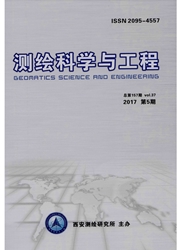

 中文摘要:
中文摘要:
选择确定新的天测与测地VLBI站址,需要考虑射电环境、气候特征、灾害性气象记录、地质条件、地理位置以及交通、水电保障等多方因素。随着射电波段主动发射在国防、经济和日常生活中越来越广泛的应用,对天测与测地VLBI观测的干扰也日益严重。选择在远离工业及类似活动中心的偏远地区设置新的观测站址,并尽量利用周围地形对可能干扰形成一定的天然屏障,是减少干扰的可行与有效途径。但是过高地形屏障也将造成对VLBI观测的一定遮掩,进而可能造成对站坐标、基线长度、河外射电源的角分辨率和地球定向参数等天测与测地重要参数测定的不利影响。本文试图从观测可及的天区覆盖范围、大气天顶延迟改正与站坐标确定的关系、基线长度重复率与地球定向参数测定等具体问题入手,量化讨论地形对VLBI观测遮掩的影响,进行某些直观的图形化表述,以作为新站址遴选工作中有关地形遮掩影响分析的参考。
 英文摘要:
英文摘要:
The selection of a new astrometric and geodetic VLBI observation site requires comprehensive considerations about the radio interference background, climate characteristics, historical disastrous weather records, geological conditions, geo- graphical location, transportation, water and electricity supply and many other factors. As the active emission in radio band is widely used in national defense, economy and daily life, the radio interference with astrometric and geodetic VLBI observations is increasingly serious. To set up new observation sites in remote areas far away from centers of industrial and similar activities and to make use of the surrounding terrain as natural barrier to possible interference is a feasible and effective way to reduce active ra- dio interference. However, an over-high topographic barrier may also block some VLBI observations, and then exert negative effects on the determination of important parameters of astrometric and geodetic VLBI, such as station coordinates, baseline length, angular resolution of extragalactic radio sources and Earth Orientation Parameters. In this paper, some specific issues are analyzed to quantitatively discuss the effects of terrain on VLBL observation blocking, such as the possible sky coverage of obser- vations, the relation between the atmospheric zenith delay correction and the determination of station coordinates, the repetitive rate of baseline length and measurement of Earth Orientation Parameters, and some intuitive graphical representations are presen- ted, which will provide reference to the impact analysis of terrain blocking in selecting new observation site.
 同期刊论文项目
同期刊论文项目
 同项目期刊论文
同项目期刊论文
 期刊信息
期刊信息
